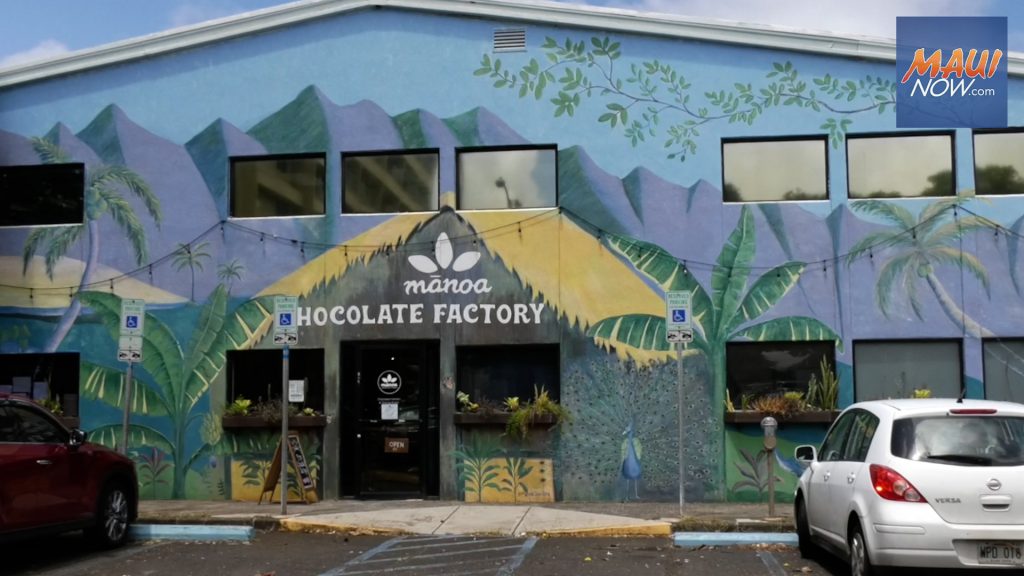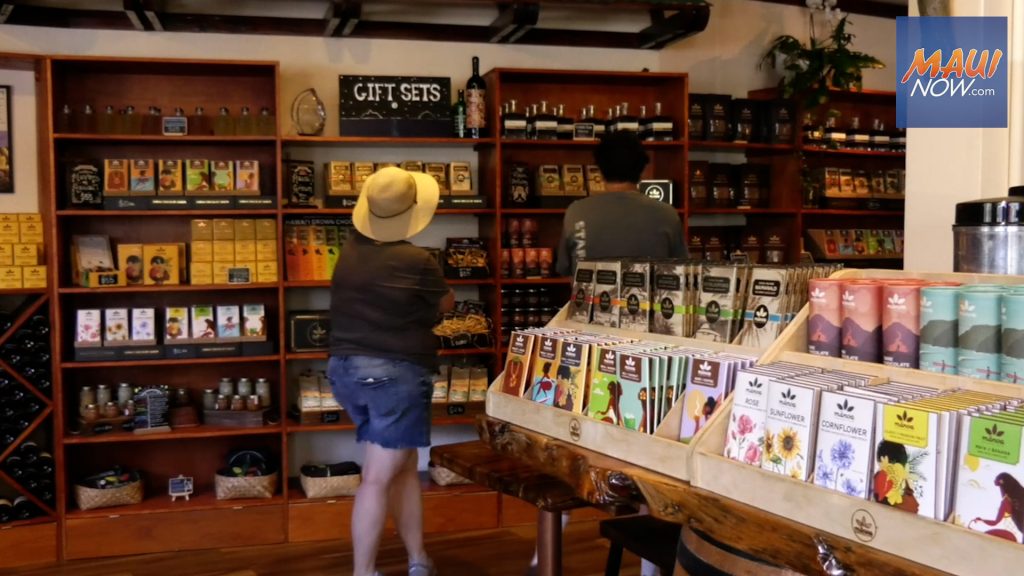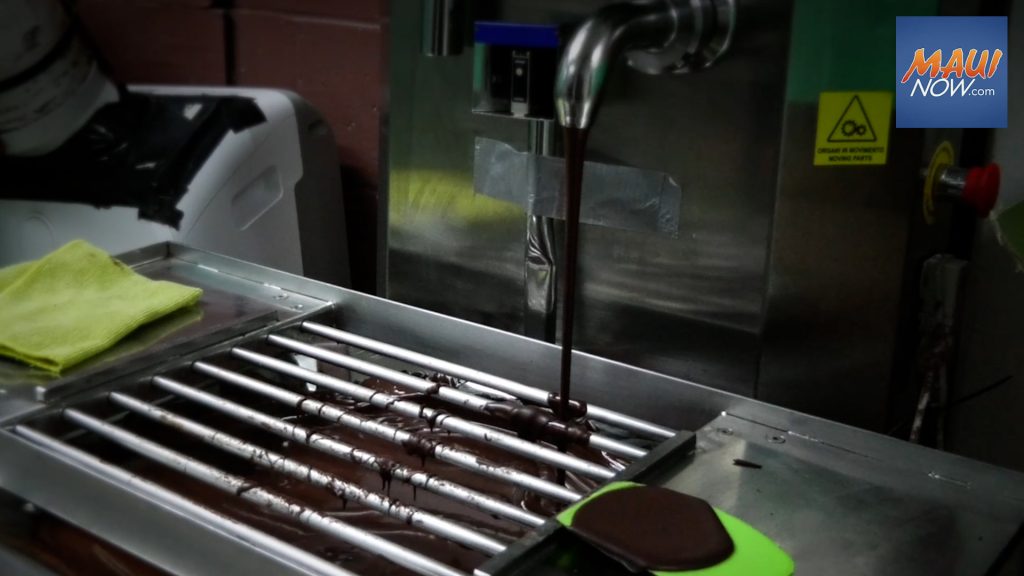From bean to bar: UH alum turned international chocolatier

Internationally recognized chocolatier Dylan Butterbaugh’s passion for chocolate began when he was a student at University of Hawaiʻi Mānoa—but it was completely unrelated to his major. The founder of Mānoa Chocolate graduated in 2011 with a degree in Spanish and interdisciplinary studies, but spent a lot of his time at UH in a lab with his friend Dan O’Doherty, who was studying cacao as a potentially viable crop for Hawaiʻi.
“I’d go into this lab and help him crack pods open, set up micro ferments and make chocolate on a really small scale,” said Butterbaugh, who was helping in a College of Tropical Agriculture and Human Resources (CTAHR) lab with Emeritus Professor Harry “Skip” Bittenbender. “[Skip] was so receptive to allowing just any student to come in and hang out in the lab and learn about whatever crops he was specialized in,” Butterbaugh said in a UH news release.
This is when Butterbaugh made his first piece of chocolate, all the way from the cacao tree to the finished product. Ironically, he didn’t even like chocolate before volunteering in the lab.

“Until I tried what Dan was making in that lab, and I tasted things like cherries and spices,” Butterbaugh explained. “I thought he’d added or infused these flavors somehow…he said, ‘no, no, that’s genetics, and that’s, like, the environment that it grows in.’ And I just thought that was so neat, because until then, I thought a Hershey bar was a chocolate bar.”
Starting with trees
The experience inspired Butterbaugh to try his hand at producing high-quality chocolate grown and manufactured in Hawaiʻi. He feared that growing and selling cacao seeds wasn’t the right place for him to start, as the labor and growing costs were too high. Instead, he dreamt of how he might turn cacao farming into a viable industry for Hawaiʻi as whole—namely, by establishing a manufacturing center to turn those crops into finished, value-added products.

“I’d always wanted to grow trees,” he said. “So I kind of wanted to figure out, ‘How do I create a job that can grow trees and still make a living for myself? Where I can stay in the state of Hawaiʻi, which is where I was born and raised?’”
“I’ve come to realize there’s two different types of industries here,” Butterbaugh added. “One is making candy and we’re trying to make really, really high-end chocolate. That’s a lot more like food.”

Butterbaugh documented all of his successes and failures through his YouTube channel, with the intention of helping other chocolate makers and entrepreneurs. His videos have gained traction in the chocolate community, and he now has more than 30,000 subscribers from all over the world. In fact, a UH family member traveling through Poland heard about Mānoa Chocolate Factory and Butterbaugh’s YouTube channel from a Polish chocolatier who is very grateful for the insights and expertise that he shares with the world.

Focus on sustainable development
Mānoa Chocolate’s name originated from the Hawaiian word mānoa which means solid, vast and depth. Butterbaugh found this name fitting: it summed up his goal to (1) make chocolate with deep, complex flavor profiles, and (2) create a vast impact on Hawaiʻi’s agricultural and manufacturing industries.

Mānoa Chocolate incorporates sustainability through its packaging by using a plant-based cellulose film that is biodegradable. The exterior packaging is made out of paper to help keep more plastic out of the landfill. To further promote sustainability and eliminate waste, Mānoa also uses the shell of the cacao seed (a commonly wasted byproduct of the chocolate-making process) to make a delicious chocolate tea that has become very popular.

“We use (additional) ingredients that everyone in Hawaiʻi loves; lilikoi, mango, coconut, banana, etc,” said Butterbaugh. “We also love doing single-origin bars where the cacao comes from different ahupuaʻa in the state. This gives these bars a unique flavor profile.”
Mānoa Chocolate has a production facility located in Kapaʻa Quarry Industrial Park, and a shop in Kailua which offers both in-depth chocolate tastings and pairings with wine. The in-house process of making Mānoa Chocolate includes roasting, tempering and molding the chocolate, with the Kailua shop manufacturing up to 7,000 bars per day. They sell their products across the Hawaiian Islands and the continental United States.

Butterbaugh described his experience at UH Mānoa as a time that “incubated Mānoa Chocolate.” He loved Bittenbender’s willingness to let him participate in lab work and the flexibility he had to craft a degree that fit his interests. Mānoa Chocolate is thriving due to Butterbaugh’s commitment to locally-sourced products. Making Hawaiʻi-grown chocolate and spreading aloha—a recipe for a sweet success story.









